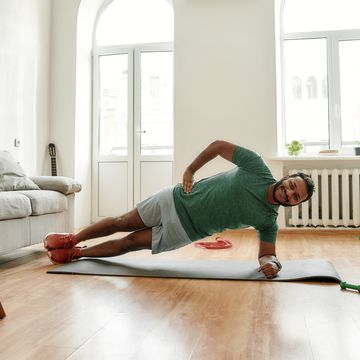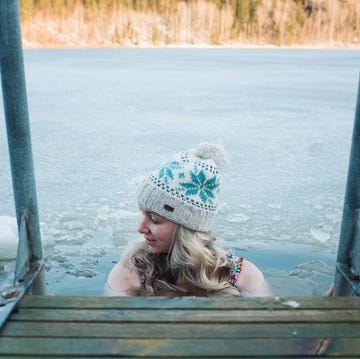While the increase in your recovery time and the decline in top performances can’t be ignored, this age can be one of the most rewarding of a runner’s life. Each age group is a chance to be the young runner again, providing anticipation as the turn-year approaches and offering the thrill of setting new marks as you enter the new group.
Some people who had busy family lives when they were younger may find new time for training. Another motivation is simply to beat the age-grading curve. In fact, you can channel the energy you once put into chasing PBs into chasing age-graded PBs, with similar, if not greater, satisfaction as you defy the hands of time.
But this is also the period when masters reality sets in. If you haven’t already adjusted your training to your changing body, you’re in danger of spending this decade fighting off injuries. ‘Keep your health before your fitness,’ says running coach Tom Cotner. Part of staying healthy is maintaining muscle strength and flexibility. Two muscle groups of particular importance are the calves and hip flexors.
For the calves, the most common problems are inflexibility and muscle pulls. But ageing calves can also lose power. To see if this applies to you, Cotner suggests finding a steep hill and running up it, counting strides. He uses a hill that’s about 500 metres long, with a gradient of 12-14 per cent. The fewer strides it takes to cover the course, the more power you have in your calves – Cotner recommends you repeat this test on the same hill periodically to see whether you’re improving, declining or maintaining power.
As for hip flexors, they are the muscles that help lift your knees and swing them forward between strides – meaning there is a strong correlation between hip flexor strength and running speed. But they can lose strength and flexibility, especially if your job entails lots of sitting.
Tight hip flexors can also lead to hamstring problems. That’s because the hip flexors attach to the pelvis and to several vertebrae of the lower back. When they get tight, says Cotner, they change the tilt of the pelvis. The result is less ability to activate the glute muscles, less hip extension (the upper leg going out behind you) and hamstrings that are overstretched and weak – so much so that Cotner sees the combination of these problems as a common syndrome. The solution to any of these problems is strength and flexibility training.
Other training tips for runners in this age group are simpler. Most coaches, for example, recommend spending as much time as possible running on soft surfaces. Cotner advises that even tempo runs should be done on a track, trail or other soft surface.
Priorities
Find motivation with each age group or in beating your PBs with age-grading.
How can I get rid of a side stitch during running.
Resting heart rate.
How to do donkey kicks.
How can I get rid of a side stitch during running
Running can reduce the hot flushes that come with menopause. Research from Pennsylvania State University, US, found both objective and subjective markers of hot flushes decreased after a 30-minute moderate-intensity treadmill run.













